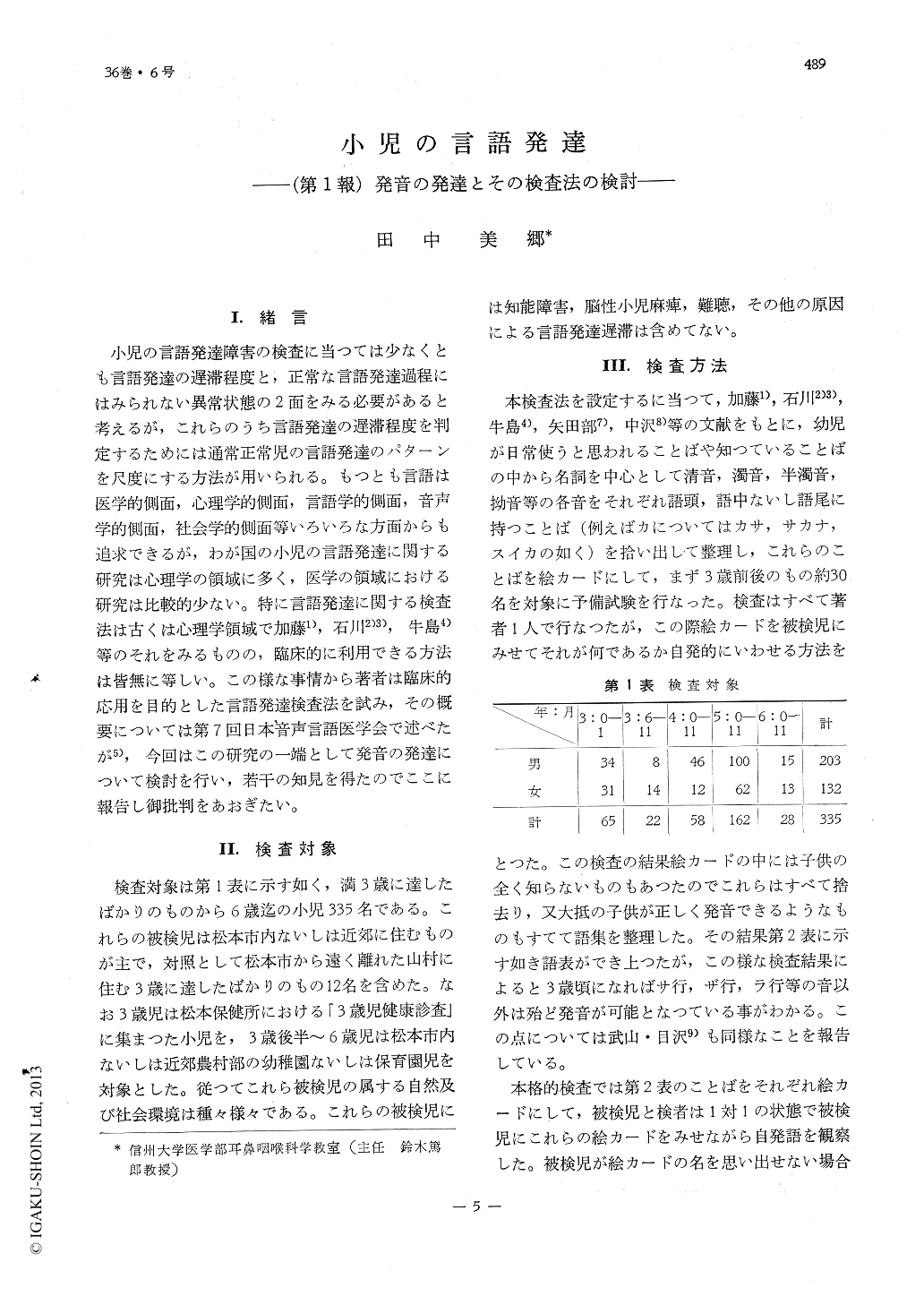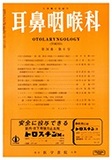Japanese
English
- 有料閲覧
- Abstract 文献概要
- 1ページ目 Look Inside
Ⅰ.緒言
小児の言語発達障害の検査に当つては少なくとも言語発達の遅滞程度と,正常な言語発達過程にはみられない異常状態の2面をみる必要があると考えるが,これらのうち言語発達の遅滞程度を判定するためには通常正常児の言語発達のパターンを尺度にする方法が用いられる。もつとも言語は医学的側面,心理学的側面,言語学的側面,音声学的側面,社会学的側面等いろいろな方面からも追求できるが,わが国の小児の言語発達に関する研究は心理学の領域に多く,医学の領域における研究は比較的少ない。特に言語発達に関する検査法は古くは心理学領域で加藤1),石川2)3),牛島4)等のそれをみるものの,臨床的に利用できる方法は皆無に等しい。この様な事情から著者は臨床的応用を目的とした言語発達検査法を試み,その概要については第7回日本音声言語医学会で述べたが5),今回はこの研究の一端として発音の発達について検討を行い,若干の知見を得たのでここに報告し御批判をあおぎたい。
Speech tests were conducted in 335 normal children aging from 3 to 6 for determining various stages of speech development. The test words were devised by picture represen-tation; the child is trained to name the pic-ture presented before him. The results were as follows:
1) At age 3 the child is able to pronounce all words excepting those that belong to columns sa, za and ra.
2) At the age 4 he is able to pronouce all words except those that belong to the column ra.
3) Reaching the age 5 generally all words are satisfactorily pronounced.
4) The cause of the disturbance of speech that occur at the age of 3-4 and those that occur beyond the age 5 should be differenciated.

Copyright © 1964, Igaku-Shoin Ltd. All rights reserved.


